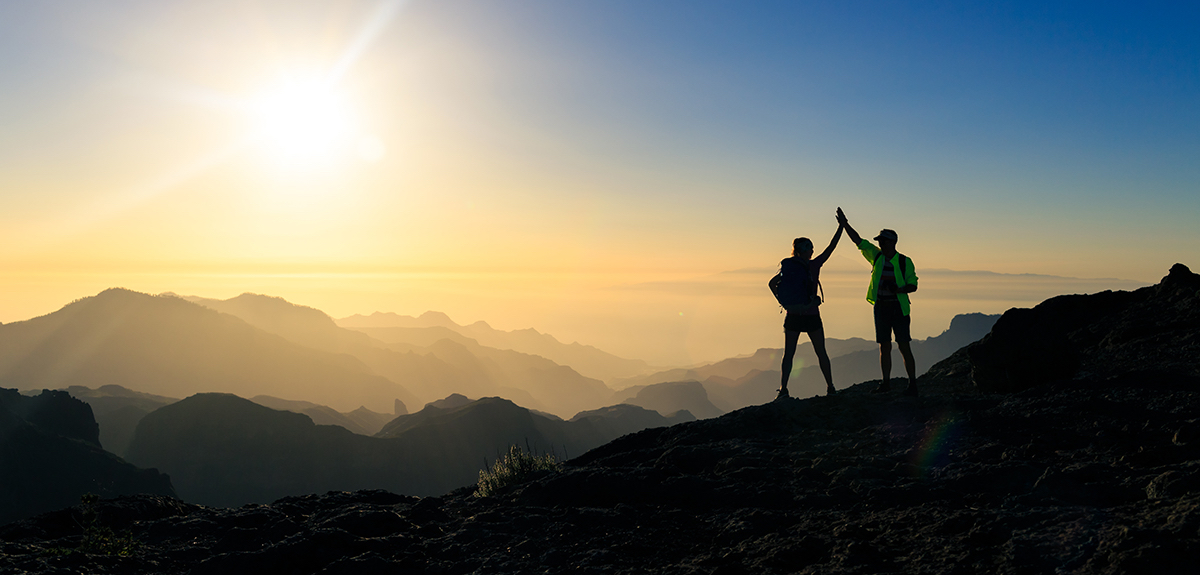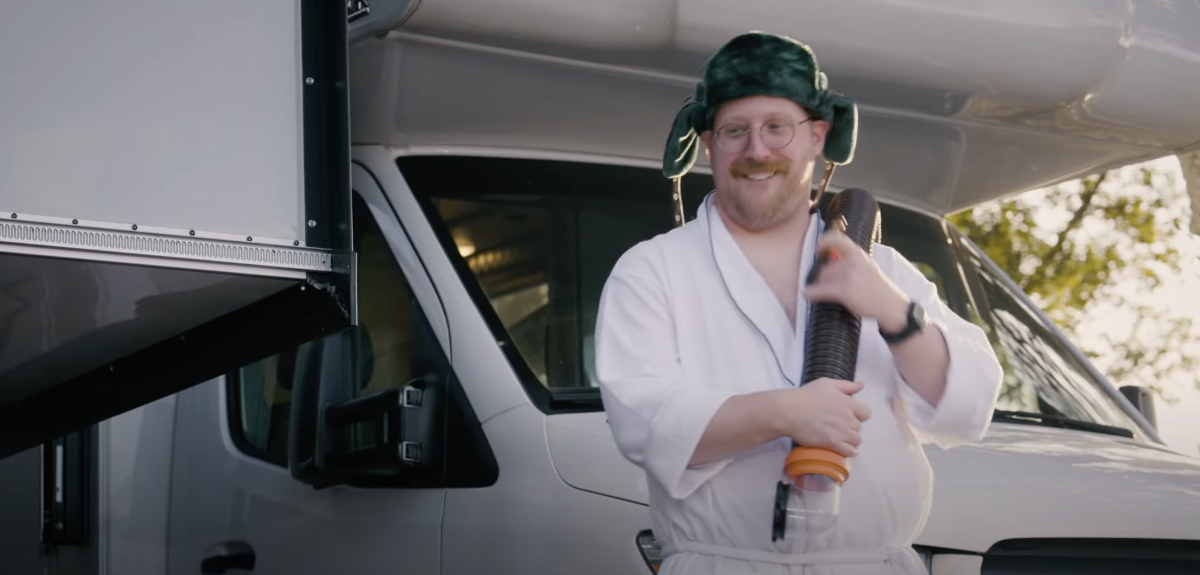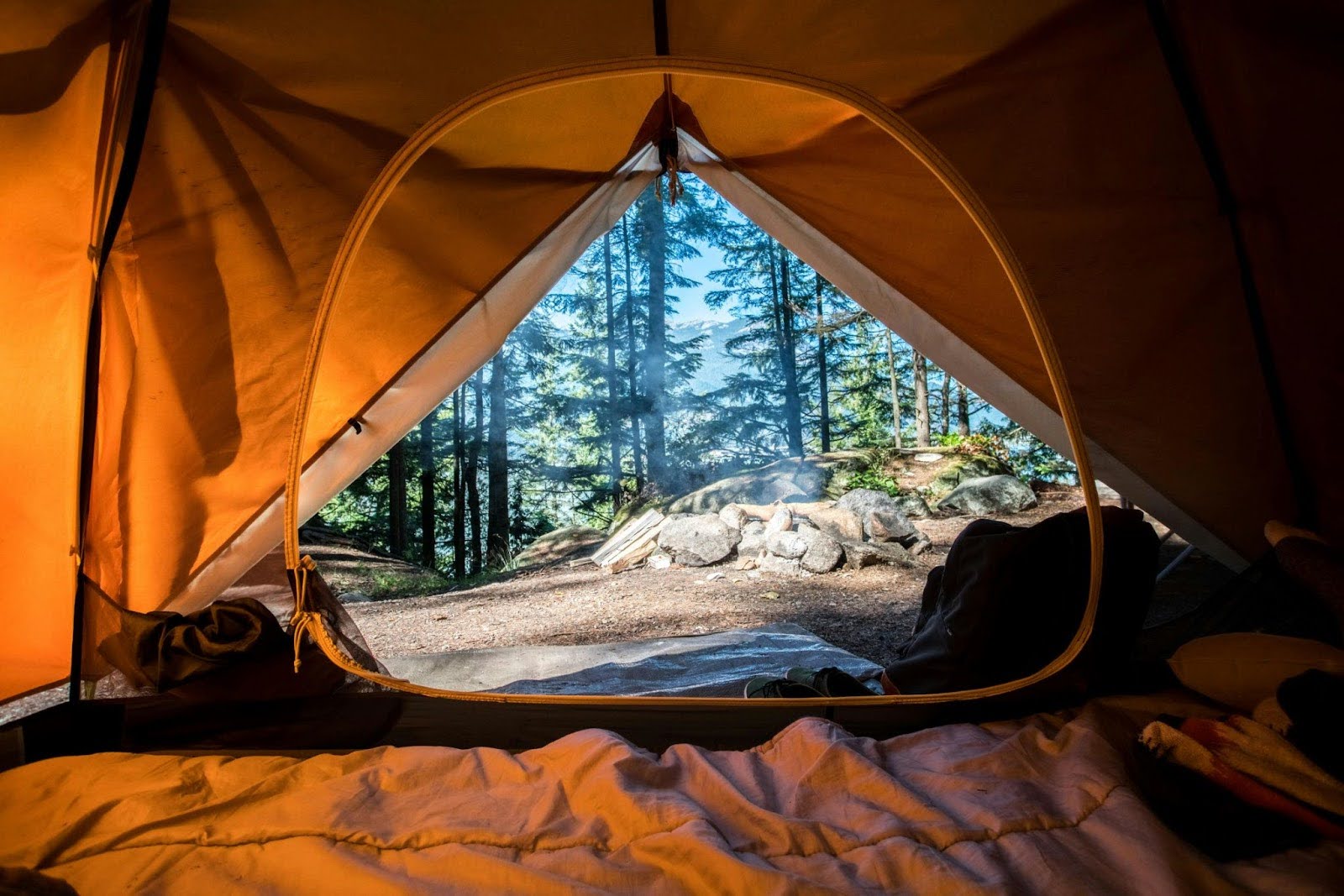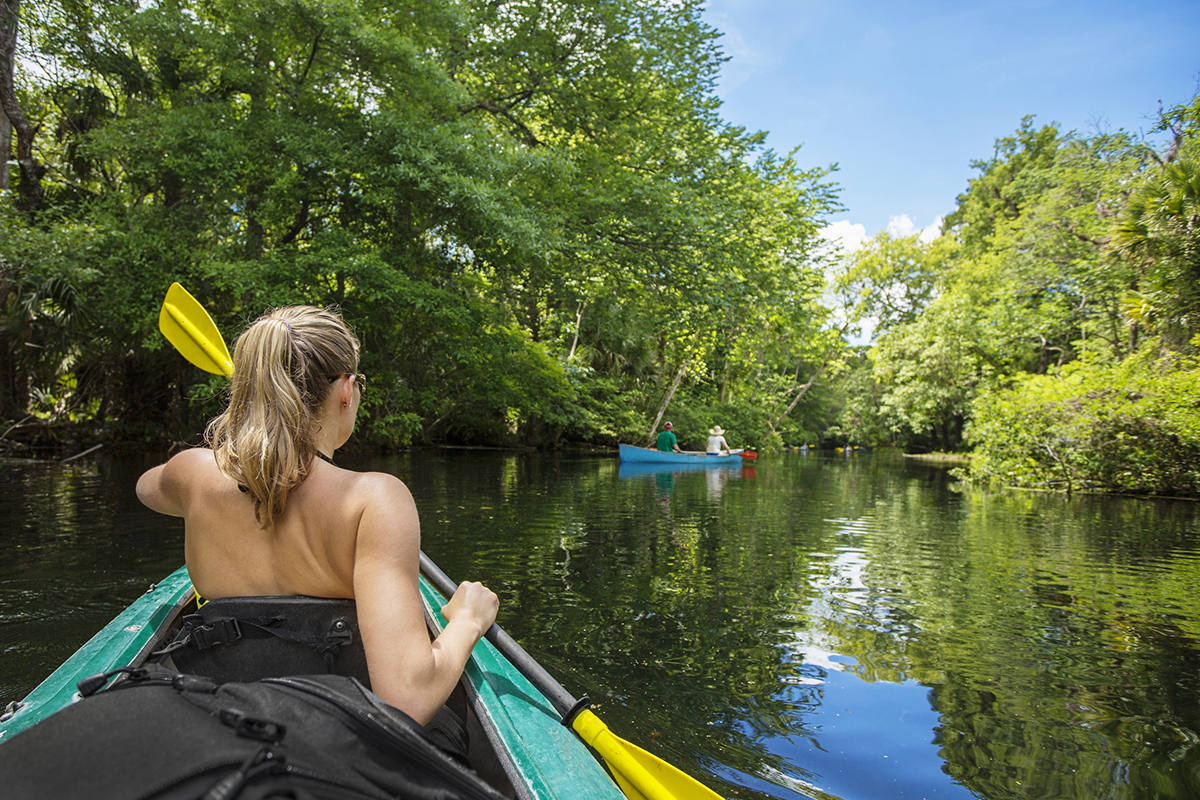Road Tripping Florida’s Northern Gulf Coast Beaches
Image Caption:
Traveling on Interstate 10 from Arizona to Florida, following the heavy truck traffic to the point of white-line fever across the bottom of the country through New Mexico, Texas, Louisiana and Alabama, it was with blissful surprise that we walked in the door of the Florida Welcome Center on I-10, just outside of Pensacola, and found ourselves instantly transported to a tropical beach vacation. We were handed cold glasses of delicious (and free!) fresh-squeezed Florida orange juice, and all around us a smiling throng of tourists was busy taking selfies with the wonderfully corny but entertaining beach props that filled the room.
When it comes to white-sand-beach vacations full of sparkling turquoise water, bikini suntans and umbrella drinks, Florida knows how to deliver, and the folks at the Welcome Centers make sure that everyone driving into the state gets swept up in the sun-drenched vacation spirit as soon as they arrive.
Fortunately, the beach is actually really close to this Welcome Center on I-10, and before long we found ourselves strolling on the soft, sugary sand of the Emerald Coast. The beach was bright white in the sun, and the water was a delicious shade of aquamarine. Families were playing volleyball, kids were making sand castles and the smell of coconut suntan lotion was in the air.
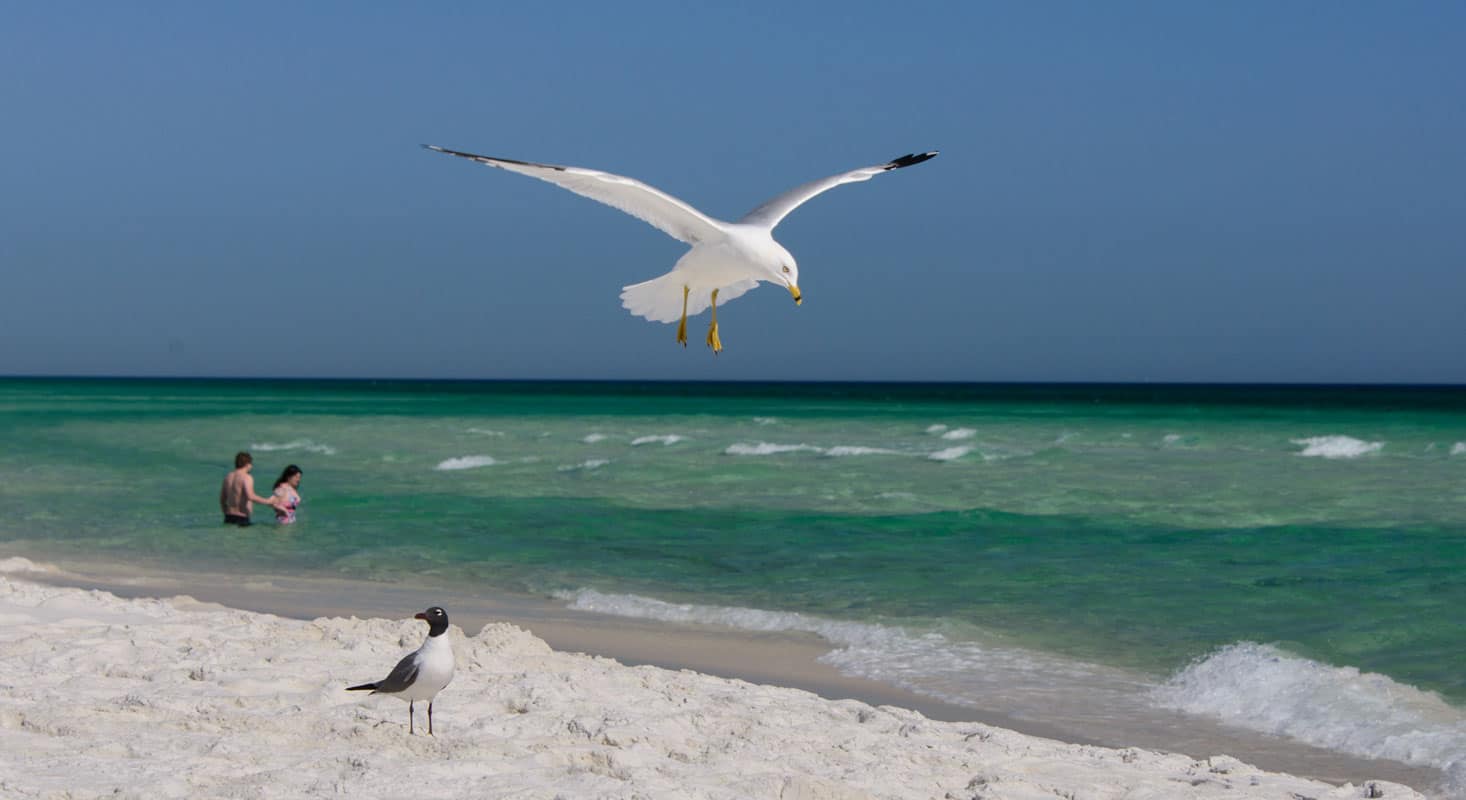
The warm, aquamarine water and soft, sugary white sands of the Emerald Coast welcome beachgoers in the summertime.
Pensacola Beach
The town of Pensacola Beach is a classic beach town, with seafood restaurants galore and sunburnt people in bathing suits walking barefoot across the main drag. High season here is the summertime, when the ocean water is toasty warm, daytime temps are hot enough to make you want to swim and the kids are out of school. Families make their escape from the daily grind to spend some vacation time splashing in the water and basking in the sun.
As we walked around town, the mood was vibrant and social, but as soon as we left the bright colors of the surf shops behind to make our way east down Route 399, we discovered that the glistening sandy beach goes on for miles and the people fade away. It is easy to stake out a spot to lie in the sun or enjoy a picnic far away from the crowds. Anywhere you put your beach blanket, the inviting jade-colored water is just steps away, and the waves send sparkling diamonds into the air as they crash upon the shore.
A thin strip of land separates the glittering waves of the ocean and the flat, calm Intracoastal Waterway. On the bay side of the road, a paved bike path traverses endless sand dunes for 10 miles from Pensacola Beach to the small town of Navarre. As we took our bikes along this idyllic path, the last buildings we passed were the towers of Portofino Island Resort where the outdoor parties were in full swing.
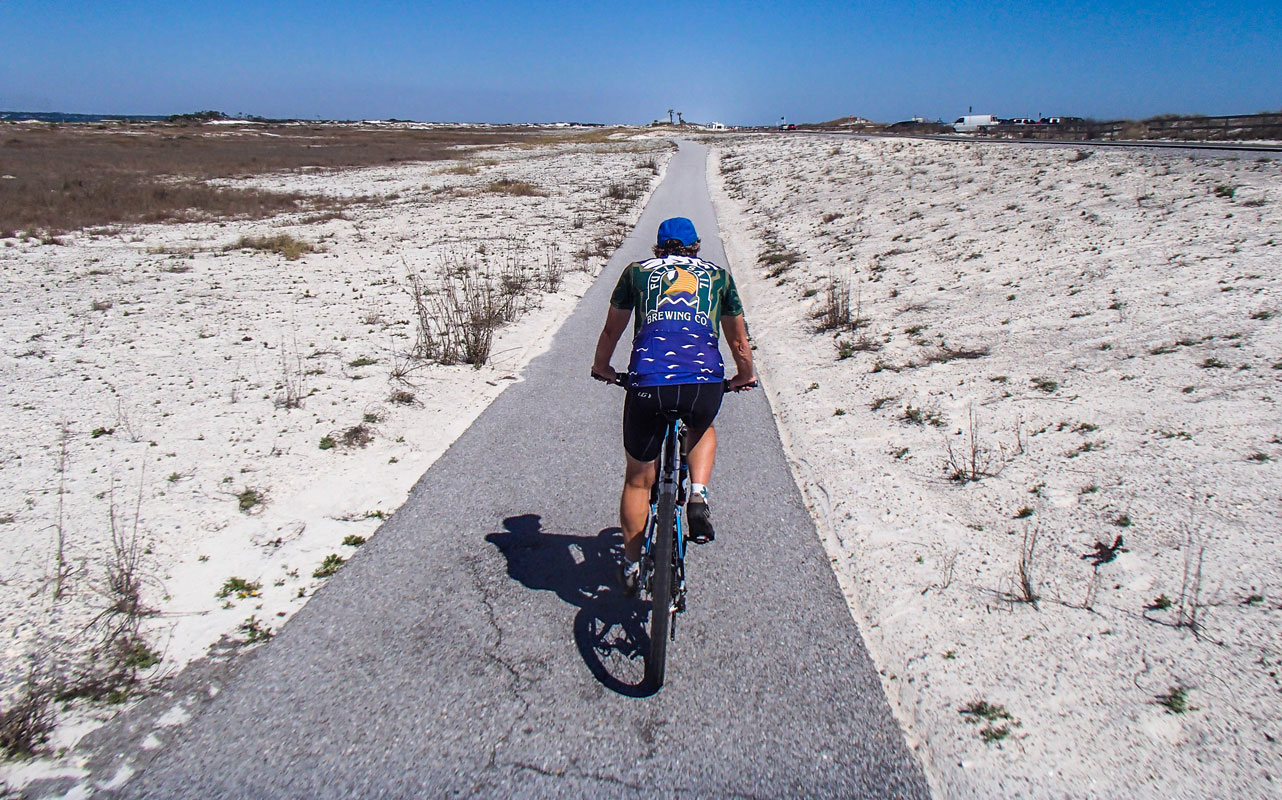
The 10-mile paved bike path between Pensacola Beach and Navarre makes for a beautiful ride, with the protected bay waters on one side and the crashing surf and open ocean on the other side.
Gulf Islands National Seashore
Yet as soon as the music from the resort faded behind us, we found ourselves thrust into the Emerald Coast as nature created it eons ago. Beach sand lay in drifts and dunes all around us, and surf pounded on the vast empty shore. Other than the narrow ribbon of the bike path alongside the road separating the open ocean from the tranquil bay, there was little evidence of humanity. We had arrived at the Gulf Islands National Seashore.
Nature can be dreamy and gentle on this coast, and it is well worth driving along the Gulf Islands National Seashore at dawn or dusk to catch the pastel colors that sweep across the sand at sunrise and sunset. The placid bay is an ideal place for a leisurely kayak ride, and on another occasion we enjoyed paddling around the marshy inlets, still within earshot of the ocean’s waves on the other side of the road.
But nature can be ferocious here too. Straying into the sand dunes away from the road, we found big sections of twisted pavement that were reminders of a time when pieces of the road were ripped apart and hurled hundreds of feet inland by the back-to-back rages of hurricanes Ivan and Dennis in 2004 and 2005, respectively.
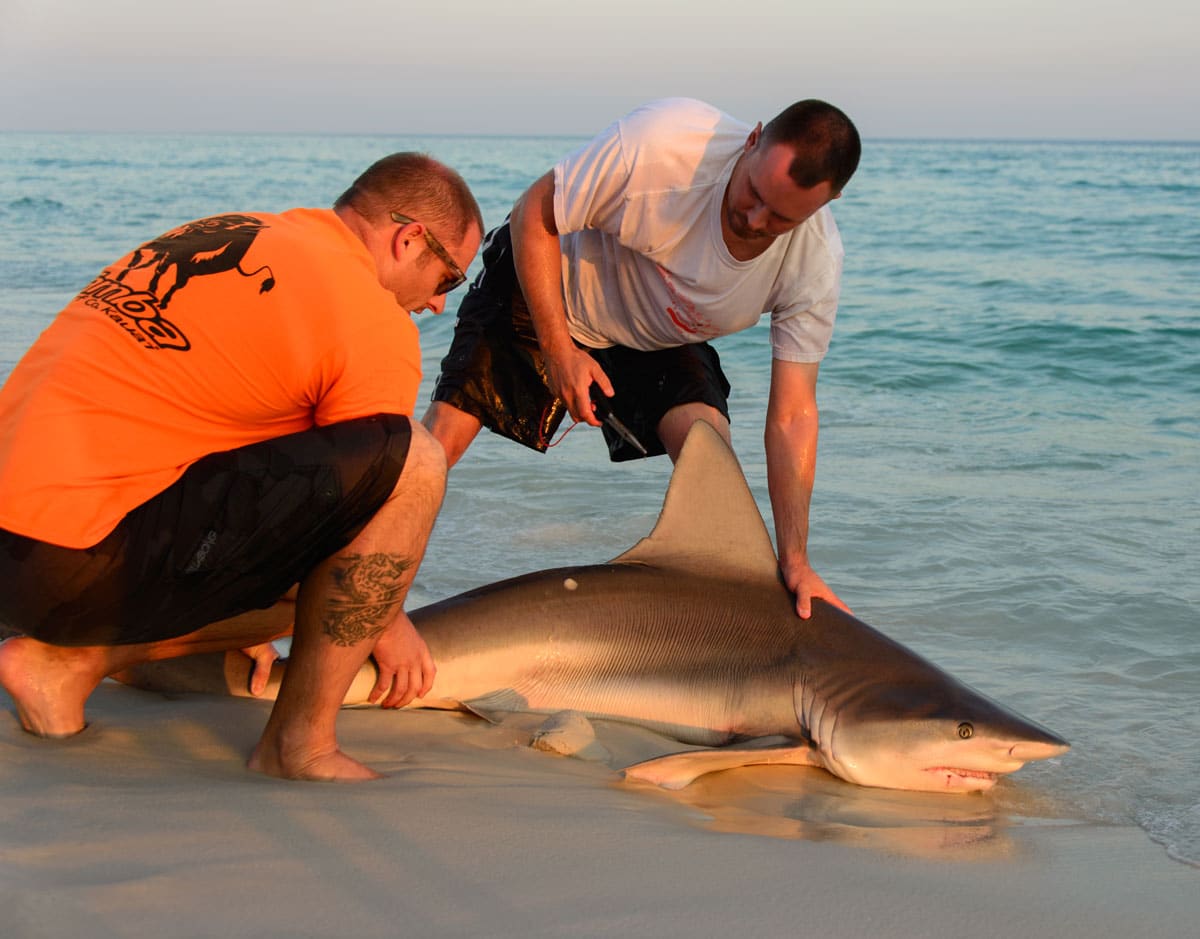
These fishermen got a big surprise, and so did the beachgoers, when they reeled in a shark.
Back at Pensacola Beach, we were surprised on two occasions to see some of nature’s more savage creatures too. One evening a group of fishermen suddenly leaped into action right next to us, and as a group of us watched them reel in their lines, everyone’s jaws dropped when we realized they had caught a shark. The shark wasn’t thrilled about being held down on the sand while the fishermen removed the hook from its mouth, but the excitement among the bystanders on the beach was palpable. After all, everyone had been swimming in those same waters just a moment before! We heaved a huge sigh of relief when the shark was finally released, and we watched him raggedly make his way back to deeper water.
On another day we came across two young bikini-clad girls taking their pet snakes for a stroll. At first we weren’t sure exactly what they had wrapped around their necks, but as we came closer and stopped to gawk, they explained that one of them was wearing a python and the other a boa constrictor. I’m not sure I’d ever think of keeping a large snake for a pet, but I do know it would never dawn on me to take my pet python out for a walk on the beach!
Apalachicola
On the map, the route from Pensacola Beach to Navarre looks small, but when we left this area to head farther east, we had no trouble driving it in a big RV, and we found lots of large pullouts and rest areas on the Gulf Islands National Seashore, where we could stop to enjoy the beach. To get onto this barrier island we paid a toll on the bridge at Pensacola Beach, but the other end, in Navarre, was toll-free.
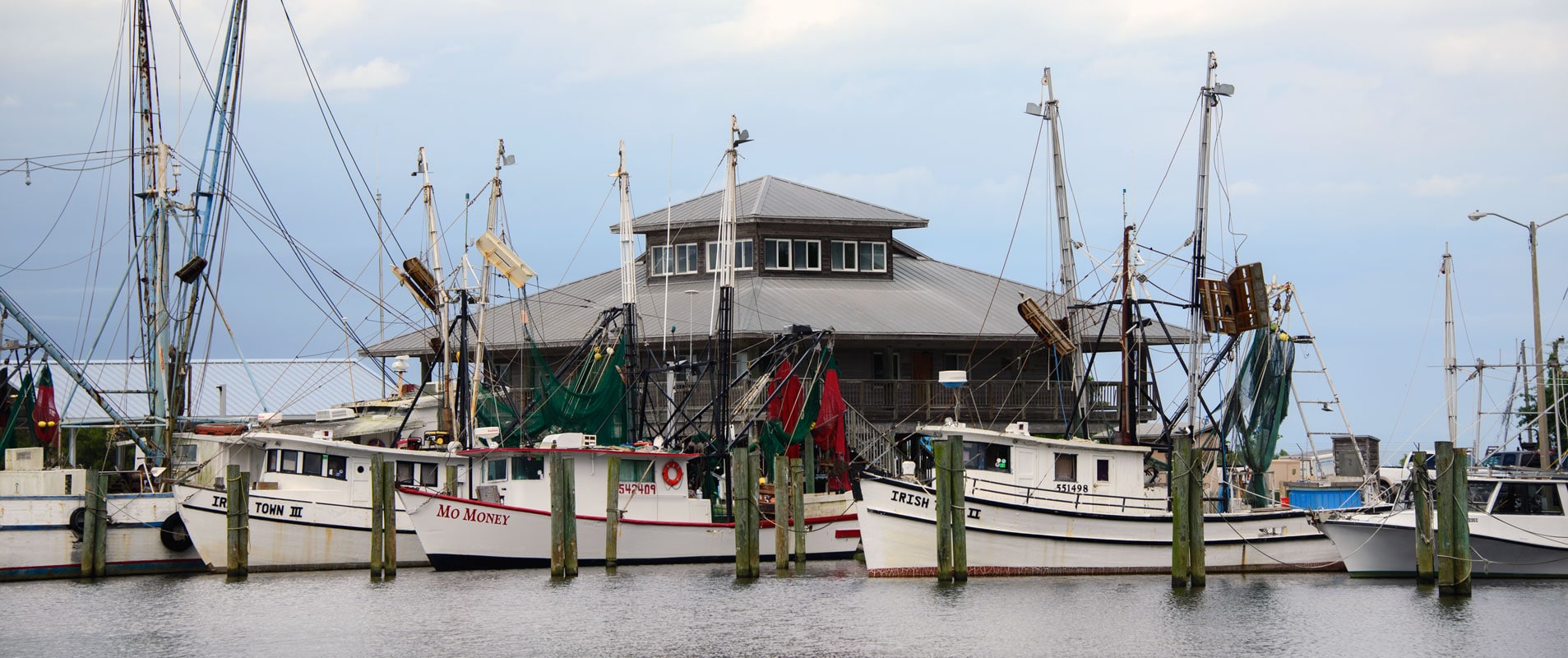
Apalachicola is a working town with deep historical roots. Home to a large shrimp and oyster fleet today, it was an important port for warehousing cotton and harvesting sea sponges in the past.
Leaving the bright white sands and vivid green water of the Emerald Coast behind, we traveled east to the small working town of Apalachicola. With early 19th-century roots in the timber industry, Apalachicola long ago made its mark as an important hub and shipping port for many industries. Harvesting oysters and sponges from the sea, and then warehousing cotton in more than 50 different buildings in town, Apalachicola landed on the map because it was ideally situated to ship goods by riverboat on the Apalachicola River. In 1907 the railroad arrived, and this enabled goods to be shipped both overland and by water.
Today, shrimping and oyster fishing are still important mainstays for the town’s economy, and a fleet of shrimping boats dominates the harbor on the backside of town. We watched men working hard on their fishing boats, cleaning and repairing them and getting them ready for their next voyage.
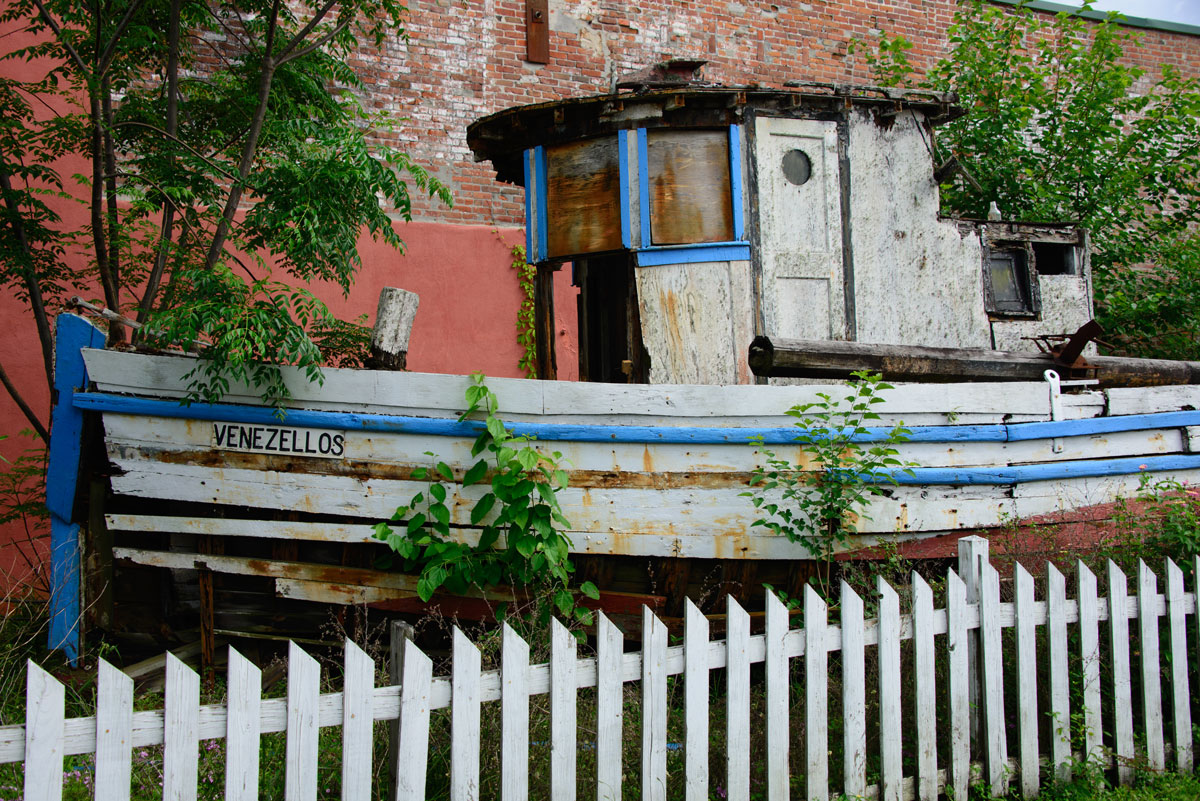
Apalachicola has a rich marine history of harvesting shrimp, oysters and sponges from the sea.
Apalachicola is in the heart of Florida’s “Forgotten Coast,” and compared to the glitzy, surf shop-filled vacation towns of the Emerald Coast, it is a lot more gritty and down to earth. The old downtown area is a fun place to stroll between handsome historic buildings, and boasts many excellent oyster and seafood restaurants. We grabbed a delicious lunch at Hole in the Wall Seafood.
Popping our heads into a guitar store in town, we began chatting with the owner and discovered that her mother, Alice Jean, who was well into her 90s, was a founder of the On the Waterfront Art Gallery next door. Even more intriguing, she had been a Coca-Cola model from the late 1930s until the late 1950s, back in the days when the big Coke billboards and magazine ads were all hand-painted by artists. How lucky we were to be able to walk over to her gallery and have a chance to meet this unusual woman as she prepared to teach an art class.
Alice Jean had been a Rockette in those days too, dancing in the first performances held at Radio City Music Hall in New York City. Even now, in her 90s, she naturally radiated the charisma and flair of a celebrity who had spent years on the stage and in the limelight. Her eyes sparkled when I asked what it was like to be a model whose likeness was seen on billboards across six continents. It was a thrill, of course, and I realized she’d been asked that question repeatedly through the many decades of her life. On the walls were posters of a few of her ads. The images showed her as a fresh-faced young girl in a bathing suit on the beach, her expression beaming as she had a Coke and a smile!
T.H. Stone Memorial St. Joseph Peninsula State Park & St. George Island State Park
We left her gallery and Apalachicola on an inspired high, and returned to the wilds of Florida’s northern Gulf Coast as we visited two state parks that lie on either side of the town: T.H. Stone Memorial St. Joseph Peninsula State Park and Dr. Julian G. Bruce St. George Island State Park. Each of these parks is situated on a barrier island, offering sheltered waters on one side and open ocean on the other. The white sand beach at St. Joseph Peninsula State Park has been rated one of the best in the nation. We spent hours walking by the water, fascinated by the seashells that were strewn across the sand, and delighting in the sensation of sand squishing between our toes. At night, in the campground, the roar of the waves lulled us to sleep.
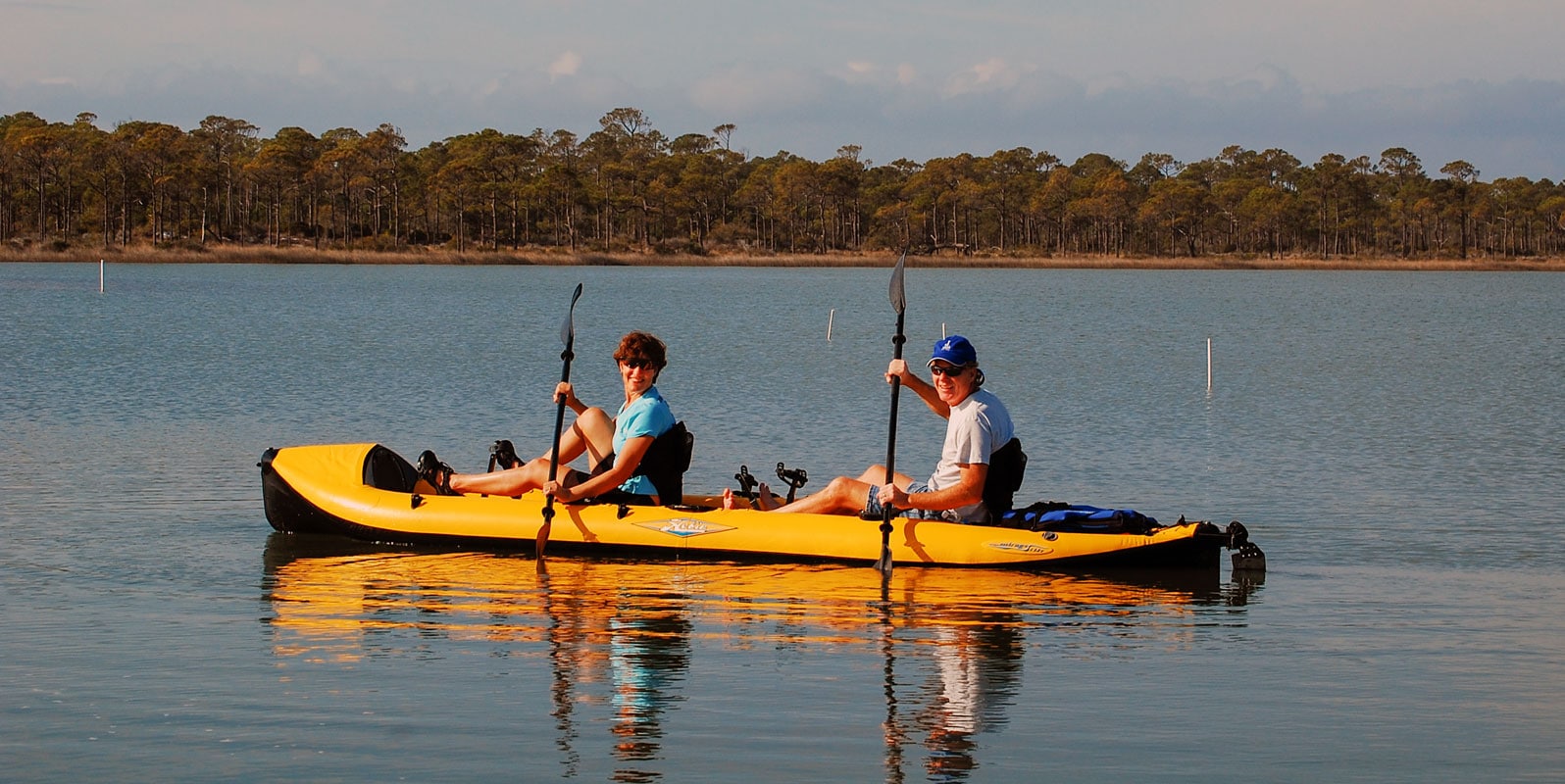
The bay side of the Gulf Islands National Seashore is an ideal spot for kayaking.
St. George Island State Park also offers an array of exotic seashells on the beach and the sound of waves wafting into the RV at night, but for those who prefer not to get sandy feet, there are endless interweaving boardwalks suspended above the dunes and winding between the trees. Periodic park benches invited us to stop and reflect on the serenity of our peaceful surroundings. On the sheltered bay side, out in the marsh grasses, long-legged birds stood utterly motionless as they waited for the telltale flash of a fish darting about underwater. Then they would snap into action at lightning speed, nab their prey and down it in one gulp. What a surprise it was to turn our attention away from the birds for a moment and see an alligator eyeing them with interest.
Ochlockonee River State Park
A little farther east along the Gulf Coast we stopped in at Ochlockonee River State Park, where the walking paths are thickly blanketed with pine needles. We noticed the salty smell of the ocean had been replaced with the pungent aroma of pine trees as we wandered through a stand of skinny, ramrod-straight “pecker” pines. Hearing a rustling at the base of one tree, we were utterly astonished when we spotted a white squirrel. These rare squirrels are indigenous to the area and are naturally snow white, not albino. One of them posed long enough for us to get a photo, and the squirrel seemed totally unafraid.
Florida’s northern Gulf Coast is a treasure trove of variety, offering everything from quintessential Florida beach resort vacations, to sunsets on deserted shores where there is not a soul to be found, to easy hikes through pine woods, and fishing towns full of early American history.
If you are planning an RV road trip to Florida, take some time to savor the gems on the Emerald Coast, and don’t forget to visit the Forgotten Coast!

